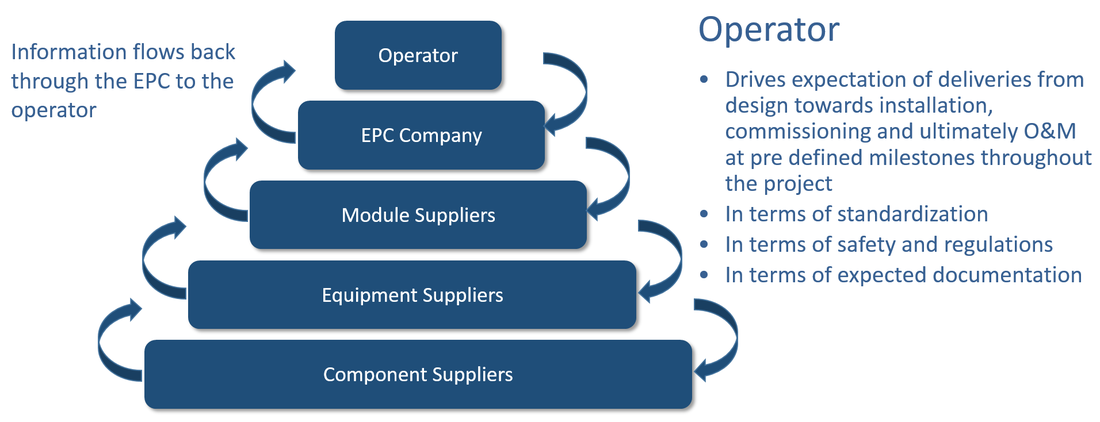
In one of my previous articles “Plant Information Management - What to manage?”
I wrote about different information structures needed in a plant project from early design through commissioning and operations.
The article left some questions hanging. One of them was: how can all this information be consolidated, managed and distributed to the various stakeholders in a plant project at the right time and with the right quality?
I wrote about different information structures needed in a plant project from early design through commissioning and operations.
The article left some questions hanging. One of them was: how can all this information be consolidated, managed and distributed to the various stakeholders in a plant project at the right time and with the right quality?
Traditionally this has been called LCI or LifeCycle Information, at least in Norwegian oil & gas industry, DFI/DFO internationally or Documentation For Installation / Documentation For Operations. In short it is the operator’s requirements and needs for information from early design through engineering, procurement, construction and up to and including commissioning. The requirements are safety, regulatory and also requirements for information the operator finds important in order to control, monitor and guide progress of the project executed by the EPC.
As the figure describes, the operator drives expectation of deliveries in terms of standardization, safety & regulatory and expected documentation needed to operate and maintain the plant after commissioning. All stakeholders in the value chain must abide to these requirements, and it is the EPC who usually has the task of coordinating and consolidating this mountain of information. A successful commissioning includes that the operator confirms that it has received all documentation and information required to operate the plant in a safe and regulatory compliant manner. At this point the EPC is excused from the project.
In theory, the documentation handover would look like the figure above, however operators experience has told them that this seldom works well. Therefore a much more frequent information exchange is required between EPC and operator leading up towards commissioning. The main reason for this is that it enables the operator to monitor, check and verify the progress in the project. It also makes for a more gradual build-up and maturing of documentation in the project. For the EPC it means frantic activity to secure all required documentation from its own engineering disciplines, and all external companies in the projects value chain (see the pyramid in figure 1.) at each milestone.
Traditionally a whole host of LCI Coordinators has been needed both on the EPC side, and on the operator side to make sure that all documentation is present, and if not, to make sure it is created…. The very “best” LCI coordinators on the EPC side manage to produce the information without “bothering” engineering too much. It has largely been a document centric process separated from the plant & product engineering process.
As long as EPC’s are only active in one country, this approach is manageable for them, however once they turn global, they find themselves having to deal with many different safety standards, regulatory standards and last but not least varying requirements and formats from different operators. Even product companies and module suppliers delivering to projects in different parts of the world experience the same thing.
In later years I’ve experienced more and more interest in leaving the document centric approach for a more data centric approach. This means that data is created and consolidated from various disciplines in data structures as described in the article “Plant Information Management - What to manage?”, and that the LCI process becomes an integral part of the engineering, procurement, construction and commissioning processes instead of being a largely separated one.
Of course there are varying strategies among companies when it comes to how much to manage, and how to hand it over.
- Some create data structures in PLM like platforms, consolidates them, manage changes and transfer data to other stakeholders in the projects via generated transmittals. This is more similar to the document centric approach only more automated.
- Some companies target re-use from project to project in addition to the aspects mentioned above by creating data structures in catalogs that can be selected in other projects as well. The selected data structure is then replicated in a project specific context and gets auto generated project specific information like tags and documentation.
- Others again removes or reduces the need for transmittals and document handovers by letting the project stakeholders directly into their platform to work and deliver information there instead of handing over documents.
- One approach was to not hand over documents at all, but simply give the operator access to the platform, link the information from the data structures as deliverables to the milestones the operator required, and then handing over the entire platform to the operator as Documentation For Operations after successful commissioning.
Bjorn Fidjeland
The header image used in this post is by Norbert Buchholz and purchased at dreamstime.com




 RSS Feed
RSS Feed
